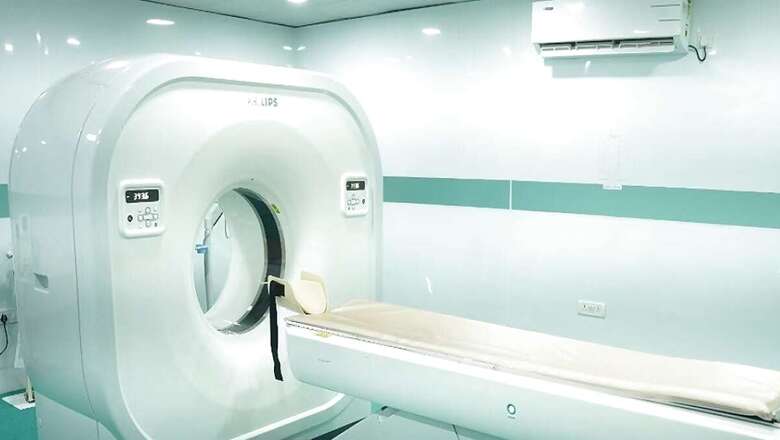
views
A CT scan of a patient with a parasite infection brought on by undercooked pork was recently shared by a US-based doctor. And it paints a concerning image of what consumption of undercooked pork can lead to.
Dr Sam Ghali, an emergency department doctor at the University of Florida Health Jacksonville, shared a picture of “one of the craziest CT scans I’ve ever seen” on X (formerly Twitter) on August 25. The patient’s legs were heavily infected with a parasite infection in their muscles, as revealed by the CT scan.
The physician said he asks his followers to guess the diagnosis as a way of using his platform to educate people about medical emergencies. Later, Ghali disclosed that the patient’s diagnosis was cysticercosis, an infection caused by parasites.
The tapeworm infection cysticercosis damages the brain, muscles and other structures. It is caused by consuming the cysts of larvae of the pork tapeworm (Taenia solium).
Cysts present in undercooked pork can infect humans with T. solium, according to Ghali.
After hatching, the larvae “penetrate the intestinal wall and invade into the bloodstream,” freely moving throughout the body and developing into hard, calcified cysts that can feel like lumps beneath the skin in the brain or muscles.
As the CT image illustrates, they look like little white spots and are known as “rice grain calcifications.”
Although the idea of larvae entering a person’s body is frightening, Ghali said they are usually harmless since the host’s immune system generally destroys the cysts.
Should the larvae make their way up to the brain and develop cysts in brain tissue, Ghali said, humans might suffer grave repercussions. “This specific condition is known as neurocysticercosis. It can lead to headaches, confusion, seizures, and other serious neurologic problems,” the physician explained.
Taenia solium is a tapeworm that infects humans by consuming its eggs. Following “usually around 5-12” weeks, these eggs can mature into adult tapeworms inside the digestive systems of humans.
It does not, however, immediately cause cysticercosis.
When an infected person transmits tapeworm eggs to another person through their “faeces,” cysticercosis occurs.
Ghali stated that it was crucial to understand that the clinical condition known as cysticercosis may only arise from the ingestion of these eggs through “fecal-oral transmission.”
Although faeces-contaminated water can potentially transmit the eggs, the infection is primarily spread by sick individuals who neglect to thoroughly wash their hands after using the toilet.
According to Ghali, there are several treatment options for cysticercosis, including “anti-parasitic therapy, steroids, anti-epileptics (neurocysticercosis), and surgical removal,” although this illness can also be lethal in certain situations.
The doctor said that an estimated 50 million individuals globally become infected each year, leading to about 50,000 casualties.
As he wrapped his X medical discussion, Ghali advised the audience to “do your best to keep clean, always wash your hands, and never, ever eat raw or undercooked pork.”
Here’s one of the craziest CT scans I’ve ever seenWhat’s the diagnosis? pic.twitter.com/DSJmPfCy9L
— Sam Ghali, M.D. (@EM_RESUS) August 25, 2024
The World Health Organization estimates that every year, 2.8 million people are suspected of having Taenia solium infection, with the majority of these cases occurring in “low and lower-middle income countries”.

















Comments
0 comment